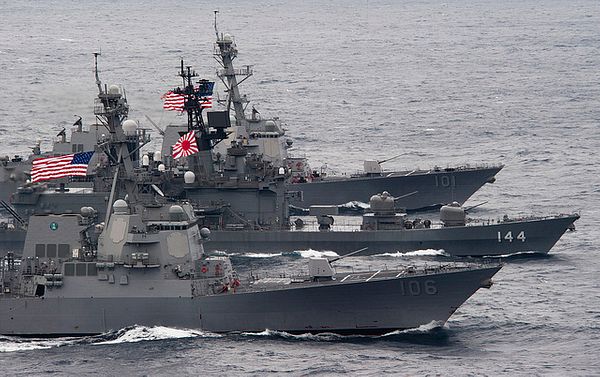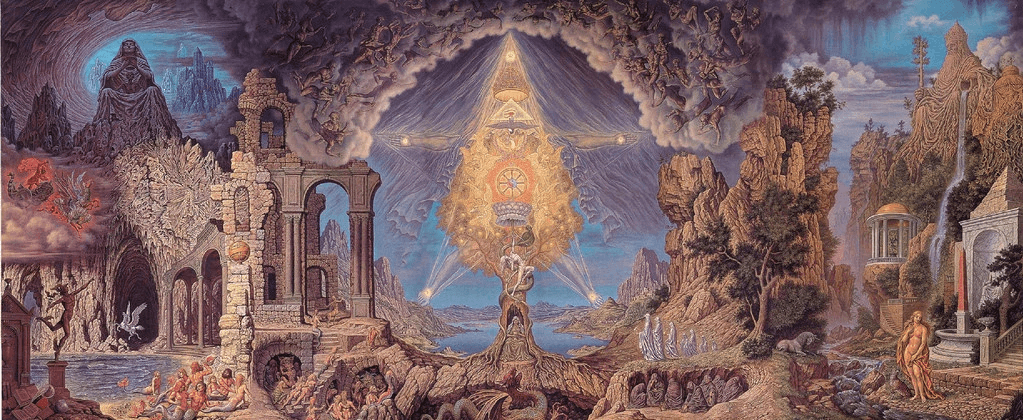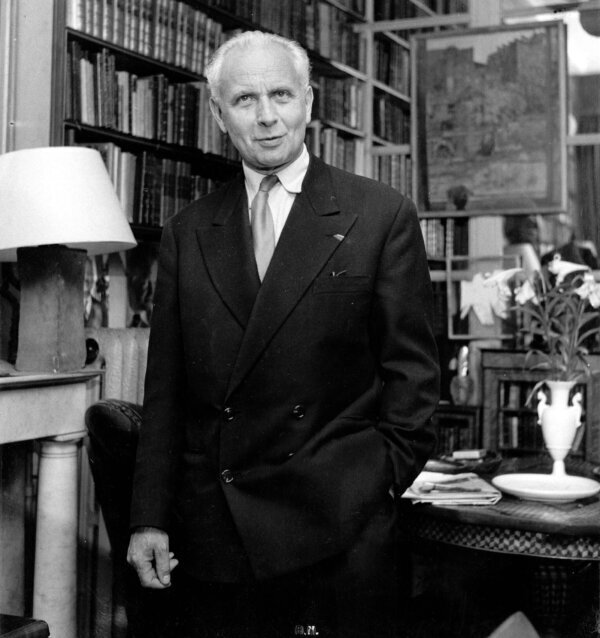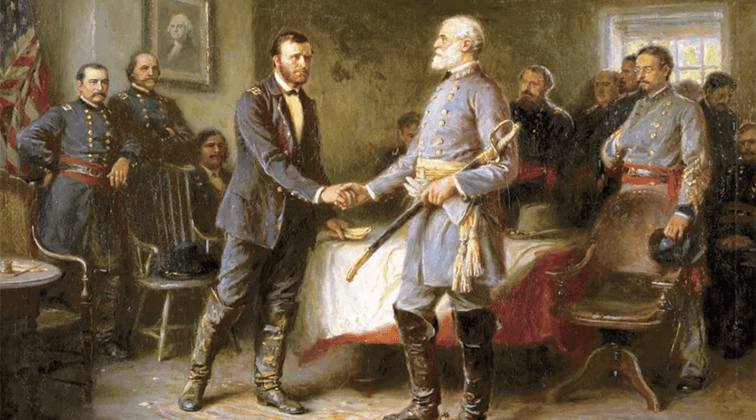Voegelin and 21st-Century Jihadism
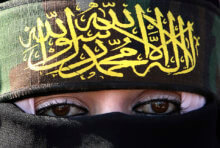
The foundation for a Voegelinian understanding of 21st-century jihadism has been laid by Michael Franz and Barry Cooper, Franz’s work in relation to modern ideology in general, and Cooper’s in relation to ideologically-motivated modern terrorism, and modern jihadism in particular.[1] What follows is a brief recap of the Voegelinian framework as Franz [has] presented it and a too-brief comment on Cooper’s work (because of time constraints), emphasizing points I find especially revealing, followed by a few suggestions of my own for where [a] Voegelinian analysis of jihadism might go from here.
The starting point for Voegelin’s work, Franz observes, was the crisis of Western civilization. The crisis was revealed by the 20th-century “suicide of Europe” (as some have called it) that came with the rise of murderous radical ideologies and the failure of European liberal societies to resist them before it was too late to prevent massive carnage. Voegelin characterized his motivation this way: “It is not simply an academic problem, or a problem in the history of opinion and so on, that evokes my interest in this or that issue in the theory of consciousness, but the very practical problem of mass murder in the twentieth century” (Franz n. 108). (A similar concern—starting especially with 9/11—is of course what is behind my generation’s interest in jihadism.)
As Franz presents it, Voegelin’s response to the crisis was threefold: 1) Uncover the “historical and experiential wellsprings” of the problem. 2) Develop “analytical tools” for understanding the problem. 3) Prescribe a “therapy” for recovery. As to the “historical and experiential wellsprings,” Voegelin’s approach was to give special attention to what the key players said and what that revealed about what moved them. The crucial common thread in the Western context was rejection of Western traditions of philosophy and revelation (Franz 2).
Among Voegelin’s “analytical tools,” the key concept was pneumapathology or “disease of the spirit,” a “disorientation [of consciousness associated with] ‘existence-in-revolt’ against the spiritual demands of ‘existence-in-tension’” (Franz 11)—that is, of existence in the metaxy, in the tension between divine transcendence and earthly realities that is the human condition. Voegelin’s basic classifications of pneumapathology as Franz unfolds them were “eclipse of worldly reality”—a withdrawal by religious believers from the demands of being in the world though not of it—and “closure against transcendent experience” by the irreligious in order to escape the demands of faith, making the things of this world the only things (Franz 10).
As Voegelin understood it, pneumapathology did not appear on the world scene until after the “leaps in being” that came with a new recognition of transcendent reality and the correspondent discovery of and existential reorientation within the metaxy, and varieties of pneumapathology historically could be categorized before and after Christ, “equivalent” in form but intensified with the severer demands of Christian faith. With respect to the eclipse of worldly reality, before Christ it took the form of “metastatic faith” (exemplified for Voegelin by the Prophet Isaiah)—the will to escape worldly demands in expectation of a divine transfiguration of reality; after Christ it emerged in the form of “parousiasm”—the otherworldly posture of waiting for transfiguration with the second coming of Christ. In the case of closure to transcendence, before Christ it appeared as the “promethean revolt” exemplified by the ancient sophistic rejection of divine authority; after Christ it took the form of “ideological consciousness” as manifested in modern ideological systems. “Common to all [the ideological] movements” as Voegelin understood them, Franz writes, is “a hubristic revolt against the limitations of the creaturely nature of human beings” (Franz 8).
Voegelin’s basic measures for judging pneumapathology and its distortions of perception were twofold: first the healthy, open, balanced consciousness mapped out by those attuned to transcendence (most notably by Plato and those who built [on] the foundation Plato had laid, especially Aristotle, Augustine, and Thomas Aquinas); and then the structures of reality visible to such a well-oriented and -ordered consciousness. The philosophic quest for a true measure—a true map of man and reality—was in fact motivated in Voegelin’s case, as in Plato’s, by revulsion and resistance against the works of the diseased (unhealthy, closed, imbalanced) soul.
Another conception crucial to Voegelin’s analysis was that of experience and symbolization. Representations of reality, as Voegelin saw it—including those of ideological systems—have to be understood as symbolizations of underlying fundamental experiences, whether of attunement to or alienation from reality. Consequently, ideology cannot be adequately understood on the level of “ideas” but only by understanding the experiences that motivate idea-creation.
Voegelin found it revealing that the central ideas of the ideological systems have tended to mirror Christian symbolizations, essentially infusing old Christian symbols (the basic conceptions if not the actual wording)—e.g., the Kingdom of Heaven—with new content. The Christian form of the ideological systems (even in the absence or rejection of Christian content) provided a clue to ideologues’ motivations. The essence of the move to create ideological systems seemed to be an attempt to create heaven on earth through immanent (specifically, political) means, taking an immanentized form of Christian soteriological history. Voegelin thus conceptualized the essence of ideology as “immanentizing the eschaton,” the redemptive end toward which history was supposed to be moving.
Another important analytical tool for Voegelin’s analysis was the concept of gnosis, what I would describe as willed certainty. It seemed characteristic of ideological system-builders to want absolute certainty about the world and to try to achieve that certainty through airtight, simple, and yet supposedly all-explanatory systems of ideas.[2] Voegelin found it helpful to understand these systems in terms of “second realities.” The “Second Reality” (Voegelin borrowed the term from Heimito von Doderer) is the dream world reality created by the ideological system-builder, in which he and those who embrace the system live as if it were the actual world (the First Reality). The term captured well the un-commonsensical, fantasy quality of especially the radical ideologies.
After applying the foregoing analytical tools to the ideological phenomena, Voegelin came essentially to the following conclusions:
First, ideological systems and movements are motivated by existential anxiety and uncertainty in the face of a crisis of meaning, in the context of a world created by Christianity, which had awoken both great expectations and great anxieties. The Second Reality of the ideological system is an attempt to impose certainty and control on a world felt to be intolerably uncertain and unmanageable. In its essence, this is a will to power—willed certainty and willed control— moved by libido dominandi, a drive to dominate a world by which one has felt dominated, and in particular a revolt against any higher reality to which he is obliged to submit, because any such submission would involve some relinquishing of control. Marx captured the essence of the attitude: “The proclamation of Prometheus—‘in a word, I hate all the gods’—is [philosophy’s (read: ideology’s)] own profession, her own slogan against all the gods of heaven and earth who do not recognize man’s self consciousness as the highest divinity. There shall be none other beside it” (quoted [in] Franz 13).
Voegelin was concerned with the great modern ideologies rather than with religious ideologies like Islamism, and in the case of Islamism in particular, perhaps even more explicitly than in the case of other religious ideologies, submission to divine reality is not only not rejected but is for Islamists the very foundation of their ideology. There is even among Islamist ideologists, it is worth noting, a kind of parallel to Promethean pride in their self-righteous assertion of [the] authority to determine exactly what the will of God is (an authority, it might be added, not acknowledged by the vast majority of careful Islamic faqih, or scholars of Islamic law). In any case, radical Islamism would be, in terms of the Voegelinian categories Franz presents, a kind of hybrid form: It is manifestly ideological in the drive to establish a worldly utopia through political means, but it has a parousiastic flavor in that it is religious (in the traditional sense of assuming a divine being) and that for Islamists God will guarantee final earthly success if only believers will follow God’s instructions (as Islamist intellectuals authoritatively discern them).
The last conclusion about ideology is that the gambit of creating a second reality involves a certain willful blindness. The act of willing certainty and a desired reality implies and presupposes awareness of uncertainty and a reality that is not as desired. The willfulness of the ideological fantasy is what reveals ideology to be a perversion and not merely a mistake.
Voegelin never treated systematically the question of how to respond to the pneumapathology he analyzed, but as Franz observes, two basic therapeutic prescriptions can be discerned in Voegelin’s writings: First, reacquaint philosophically capable people with the experiences that would allow them to transcend ideological blindness. Second, communicate the diagnosis to expose the perversion of the ideological leaders (see Franz 120-21). Seeing the nature of the problem and helping others see it is the first necessary step for developing an adequate response, and exposing the diseased state of the ideological leaders will help inoculate people against their siren call.[3]
Barry Cooper’s analysis of modern terrorism is much too rich and variegated to allow for brief summary. I will restrict my comments to Cooper’s treatment of the “inner logic” of terrorism and the “structure of terrorist consciousness.” I would characterize this inner dimension of terrorism in terms of the internal actions and states of the terrorist’s mind.
In terms of internal action, the most prominent feature is a “boundless…self-purging” (Cooper 36), a continuous effort of ideologues to purify themselves and the world of designated evils through violence. (The external violence comes out of the inner urge for purgation as a kind of catharsis.) The foundational act of purgation is the creation of a Second Reality, which in the case of more extreme ideologies requires a “murderous Procrustean trimming” of “human material” to shape it to fit the “model or pattern” of the ideologue’s chosen “idea” (Cooper 38-39). The mythical Greek Procrustus had a strange obsession about his guest bed: If a guest did not fit the bed precisely, Procrustus would make him fit. If the guest’s feet lapped over he would cut them off; if the guest was too short he would put him on a rack and stretch him until he was the “right” length. I always tell this myth to my own students as the perfect metaphor for what ideology does: It does violence to reality to make it fit a pre-conceived mold. Because the terrorist’s ideological idea, being radically inconsistent with reality, is impossible to achieve in practice, there can be no end to the violence done to make people in the real world fit the mold.
Intrinsic to the creation of the Second Reality, Cooper agrees with Voegelin, is a certain willful blindness about the First Reality that on some level the ideologue knows very well. As mentioned earlier, the certainty and control established by the asserting ideology is a willed certainty and control, and the willful assertion of certainty and control presupposes recognition of uncertainty and lack of control. Achieving this certainty and control requires an unbending, deliberate refusal to look at certain realities that do not fit the paradigm, including in the case of terrorism ignoring obvious moral boundaries. As Cooper observes, the terrorists’ willful blindness is revealed in the great lengths to which they go to deny they are killing the innocent (Cooper 40).
As [an] illustration of the dynamic, I have my students picture a Nazi soldier moving to shoot a kneeling old Jewish woman in the head. As he steps forward and raises the gun, it is hard for him not to think of his grandmother. But he shuts that out of his mind. He must ignore the grandmotherly quality of the woman before him for the sake of the ideologically fabricated historical imperative of purifying the race. This shutting-out-of-mind is patently a deliberate, willful act.
The foregoing acts of consciousness require as a precondition a certain state of consciousness. Drawing from Cooper’s analysis, I would stress three factors. First, there is a longing for purification (Cooper 48). To put this in the Voegelinian terms Franz identified, the would-be terrorist feels an intense desire to escape the worldly demands of the metaxy with its ever-present possibility of corruption or failure and succumbs to the ideological impulse. Secondly, there is a profound sense of “impotence” to respond adequately to one’s environment and personal troubles (ibid.). And lastly—the reason for the impotence—there is a lack of spiritual substance that would sustain one in the face of life’s challenges. This is the problem Robert Musil described in terms of the “man without qualities.” Ideology is a substitute for an absent spirit—for something missing inside—and ideologically based terrorism, in its radical destruction, is the self-assertion of a half-missing self.
All of these observations about terrorism in general, as Cooper convincingly argues, fully apply in the case of jihadist terrorism.
Cooper has made a great start, but much more can be done in the line of Voegelinian analysis for a fuller, richer understanding of modern jihadism. Here are some suggestions:
1. A more systematic analysis and application of Voegelin’s particular insights on ideology (as opposed to just the main ones) in relation to jihadism.
2. A fuller analysis of the relevant civilizational crises. There are civilizational crises (plural) involved, both within [the] West and within the world of Islam, and these crises overlap: radical Islamism is both (in part) a reaction against the West and has been significantly influenced conceptually by Western radicalism.[4] With the breakdown of the old civilizational matrices of meaning in the modern era, vacuums of meaning emerged which ideologies rushed to fill. By their own account (as expressed most notably by intellectual forerunner Sayyid Qutb), Muslims had tried liberal democracy and communism and found them both wanting, and it was time to try Islam (as Islamists reductively construed it). Much more work needs to be done to understand both the Islamic civilizational crisis and its overlap with that of the West.
3. In order to get a more concrete picture, a close, systematic analysis (in light of Voegelin’s insights) of individual contemporary radical Islamists and jihadists, both the system-builders and latchers-on to the system. For instance, Franz in commenting on Cooper’s book asked for more concrete examples of willful blindness, and such examples abound—they just need to be told.
4. An updating of Cooper’s analysis for understanding rapidly evolving new developments in jihadism.
5. A systematic comparative analysis of Islamist and Western forms of radicalism for further insights into the common underlying experiences (as I have focused on here) as well as recognition of telling differences.
6. A study of the impact of Western observers’ and decision-makers’ own ideological predilections on their understanding of jihadism.
Applying Voegelin’s analytical tools in all these areas would give us a very deep and rich understanding indeed of jihadism, and I welcome any suggestions my fellow students of Voegelin may have for how to do so.
Notes
[1] Barry Cooper, New Political Religions, or an Analysis of Modern Terrorism (2004); Michael Franz, Eric Voegelin and the Politics of Spiritual Revolt: The Roots of Modern Ideology (1992).
[2] Gnosis was an element, of course, of “gnosticism,” Voegelin’s original shorthand for the modern ideological tendency, parallel to that of the original Gnostic movement, to claim secret, certain knowledge of reality and to attempt a radical escape from the evils of the world. Voegelin later moved away from the term “gnosticism” (though not from “gnosis”) to avoid confusion over the relation between the technical concept and the ancient historical movement.
[3] It should be pointed out in order to avoid misunderstanding that pneumapathology as Voegelin understands it can take relatively mild forms and that even more serious forms do not always make pneumapaths personal monsters. That a thinker is spiritually diseased does not for Voegelin necessarily entail that he has no admirable qualities or that he is incapable of genuine insights into reality, only that he is existentially disoriented—spiritually closed and imbalanced to a degree unusual for ordinary people, though not always to an extreme degree. For Voegelin, Hegel for example was pneumapathological and consequently his thought had a dangerous tendency, but Hegel was no Hitler.
[4] Voegelin thought the crisis of the West had not ended with the cessation of the 20th-century Western orgy of violence. European countries continued (and I would argue still continue) to lack a matrix of meaning that could adequately replace that provided by Christianity, and so the old identity crisis remains unresolved. We can see this today in the general loss of confidence in once taken-for-granted cultural values manifested intellectually (for example) in postmodern doubt.

